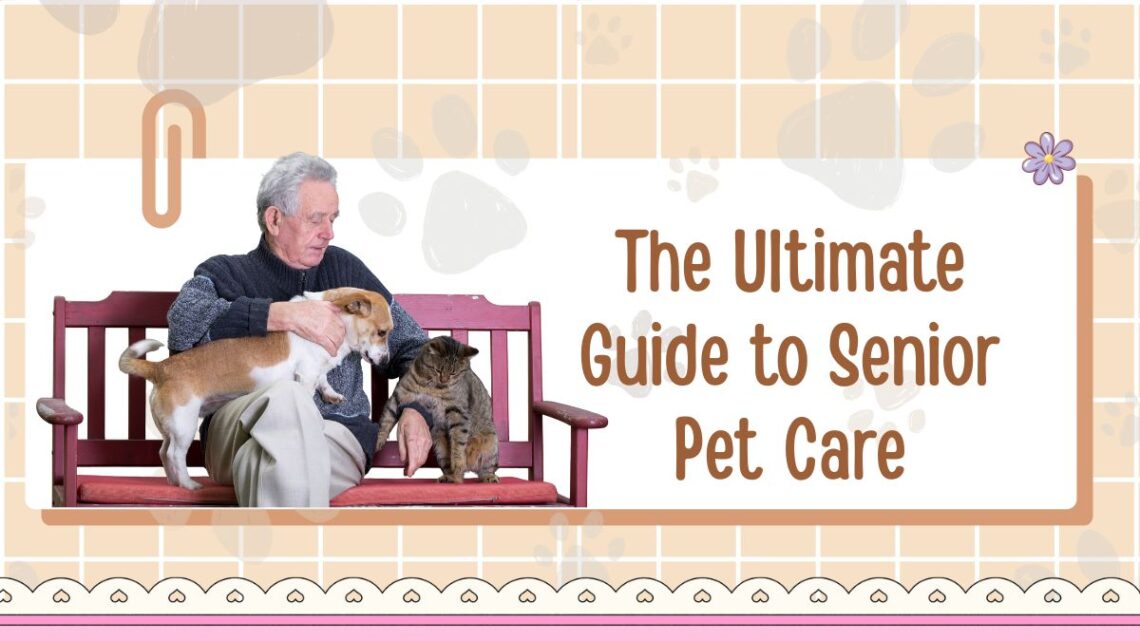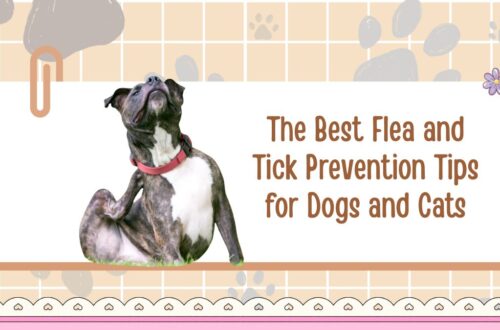As our beloved pets grow older, they require thoughtful adjustments in care to ensure their golden years are filled with comfort, mobility, and joy. With advances in veterinary medicine, diet, and wellness, more dogs and cats are living longer—and that means our responsibilities evolve.
In this comprehensive guide you will find the latest information, practical tips, and detailed tables to help you navigate senior pet care for older dogs and cats, covering health, nutrition, mobility, mental wellness and environment.
Defining “Senior” for Pets
When is my pet considered a “senior”?
- For dogs, the label “senior” often begins around 7 years of age, though this varies significantly by breed (largebreed dogs age faster)
- For cats, many veterinarians mark the senior years at around 10 years of age.
- Statistics indicate that 20% to 40% of pets (cats and dogs) may be in the “old” category—defined as greater than 11 years of age in studies.
Why this matters
As pets age they become more prone to chronic conditions, less mobile, with changing nutritional needs. Recognizing the senior stage helps owners and vets shift to preventive and supportive care rather than reactive care.
The Aging Body: What Changes to Expect
As pets age, physiological and behavioural changes often occur. Understanding these early helps you support your pet proactively.
Key body-system changes
- Mobility & joints: Arthritis and stiffness become common. Dogs and cats may lose muscle mass, have less joint lubrication, and show reluctance to climb stairs.
- Weight & metabolism: Many older pets tend to gain weight (due to reduced activity) or in some cases lose muscle mass, requiring adjustments in diet. In one source about 60% of cats over age 6 were overweight or obese; 56% of dogs aged 7+ had similar weight concerns.
- Cognition & senses: Older pets may experience decreased vision, hearing, and possibly cognitive dysfunction (similar to dementia in humans).
- Organ systems & immunity: Aging pets may show changes in heart, liver, kidney, urinary and digestive systems, with weaker immune response.
- Nutrition & digestion: Digestive efficiency often declines; senior pet nutrition must adapt.
Senior Pet Care Quick Reference
| Category | What to Monitor & Adjust | Why It Matters |
|---|---|---|
| Mobility & Exercise | Shorter walks, low-impact play, ramps/stairs assistance | To maintain muscle tone, avoid joint pain |
| Weight & Body Condition | Monitor weight monthly, adjust caloric intake, ideal body score | Overweight accelerates disease, underweight is risky |
| Nutrition & Diet | Senior-form diet, higher quality protein, joint supplements | Nutritional needs change with age |
| Annual Vet Visits | Twice-yearly exams, bloodwork, dental checks | Early detection of age-related disease |
| Cognition & Mental Health | Enrichment toys, new simple training, avoid stressors | Mental engagement maintains quality of life |
| Environment & Comfort | Soft bed, easy access to food/water, non-slip surfaces | Home adjustments ensure safety and comfort |
| Signs & Symptoms to Watch | Changes in appetite, mobility, behaviour, toileting | Early intervention improves outcomes |
Nutrition & Diet: What Senior Pets Need
Adjusting the diet
- As pets age, metabolic rate and lean body mass decline, so caloric needs may drop—but protein needs often increase or remain steady to maintain muscle.
- Senior pet food formulas often include: high quality digestible protein, omega-3 fatty acids, glucosamine/chondroitin, antioxidants like vitamin E, L-carnitine for brain health, and fibre for digestion.
- Because digestion slows, smaller frequent meals, easily digestible food and hydration support are important.
Weight management
Overweight senior pets are at increased risk of diabetes, arthritis, heart disease and shortened lifespan. One study cited 56% of dogs aged 7+ as overweight. Maintaining ideal body condition helps longevity and quality of life.
Veterinary Care & Preventive Health
Frequency of checkups
- For senior pets, an annual check-up may become twice yearly or more for early disease detection.
- Blood work, urine analysis, dental checks, joint assessments, heart and organ screening become critical.
Common senior pet health conditions
- Arthritis / joint disease
- Dental disease (many older cats and dogs have significant dental issues)
- Kidney & liver disease
- Heart disease
- Cognitive dysfunction syndrome
- Cancer (older pets are at higher risk)
Early detection and management can slow progression and improve comfort.
Mobility, Comfort & Environment Adaptations
Making the home senior-friendly
- Use ramp or stairs for beds or cars especially for dogs with joint issues.
- Provide non-slip flooring or mats so pets don’t slip on smooth surfaces.
- Place food, water and litter box (for cats) at level that doesn’t require jumping/climbing.
- Choose an orthopedic bed to support aging joints and sleep quality.
- Keep routines predictable: older pets thrive on routine and familiar environment.
Exercise tips for older pets
- Shorter walks but more frequent, gentle play sessions.
- Focus on low impact activity, swimming if accessible, avoid strenuous jumps.
- Use mental games/treat puzzles to engage pet while protecting body.
Mental Health & Enrichment
Caring for your senior pet’s mind is as important as their body.
- Provide enrichment: scent games, interactive toys, gentle training sessions.
- Older pets may experience cognitive decline: signs include disorientation, changes in sleep-wake cycles, decreased interaction. Being aware allows early intervention.
- Maintain social interaction: pets still benefit from companionship, gentle touch, connection.
- Monitor for behavioural changes such as anxiety, reduced appetite or lethargy that may indicate underlying medical issues.
Cost & Long-Term Planning
What to expect financially
- Senior pet care often involves increased cost: specialty foods, joint supplements, more frequent vet visits, diagnostic tests, possible chronic medication.
- With older pets living longer, planning for “senior care budget” is crucial.
Lifetime horizon
- Recognise that quality of life matters: quality over simply prolonging life at any cost. Work with your vet to assess comfort, mobility, appetite and happiness.
- Consider end-of-life care (palliative care, hospice for pets) and know your options ahead of time so decisions are calmer when needed.
Special Considerations by Species & Breed
Dogs
- Larger breeds often reach “senior” sooner than smaller breeds.
- Breed-specific risks: e.g., large breeds are more prone to hip dysplasia, heart issues; brachycephalic breeds (flat-nosed) may have breathing problems.
- Senior dog diets may decrease energy calories by up to 25% relative to younger adult stages to avoid weight gain.
Cats
- Many cats are considered seniors at 10+ years, and “geriatric” around 15 or older.
- Aging cats often hide pain or illness – subtle changes in litter box use, gait, appetite or grooming may signal issues.
- Weight loss in older cats is a red flag—unlike dogs, some senior cats require the same or even more energy intake due to decreased digestibility.
Caring for a senior pet is a deeply rewarding endeavour: you get to give back the love your companion has always shown you.
With the right adjustments in nutrition, veterinary care, environment, mobility and mental health, you can help your older pet thrive. Recognising the shift into the senior years, planning ahead and maintaining proactive care will give your pet the comfort, joy and dignity they deserve in their later life.
FAQs
Transition to a senior diet typically around the time your veterinarian defines “senior” for your pet—often around 7 years for dogs (depending on breed) and 10 years for cats. It’s best to discuss with your vet based on your pet’s breed, health and condition.
Warning signs include decreased appetite, noticeable weight loss or gain, reluctance to move or climb, difficulty getting up, changes in behaviour or sleeping patterns, excessive panting or coughing, changes in drinking or toileting habits. If you notice these, contact your vet promptly.
No—exercise remains essential, but it should be adapted. Older pets benefit from gentle, regular, short activity rather than strenuous long sessions. Avoid high-impact jumps or sudden sprints; focus on maintaining muscle tone, joint lubrication and mental engagement.






